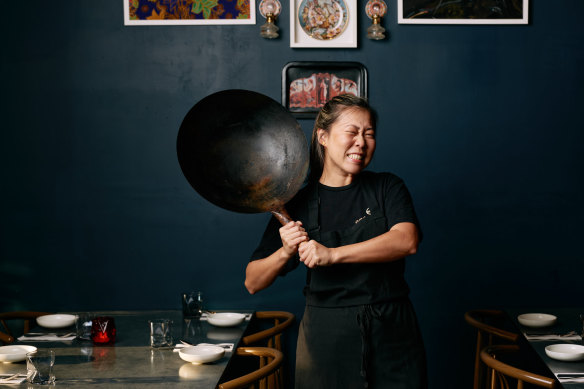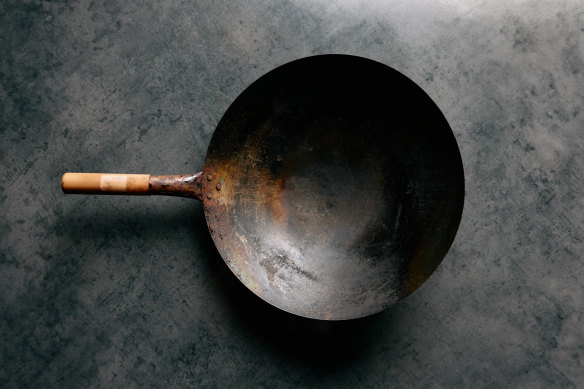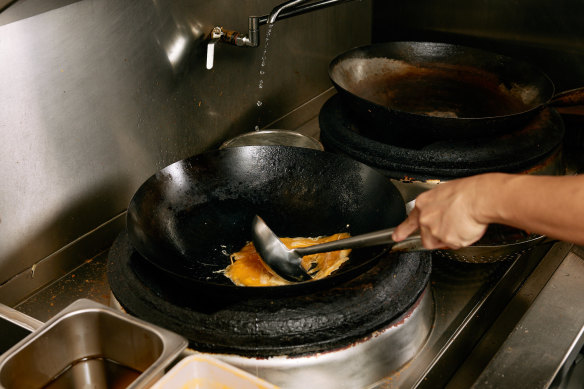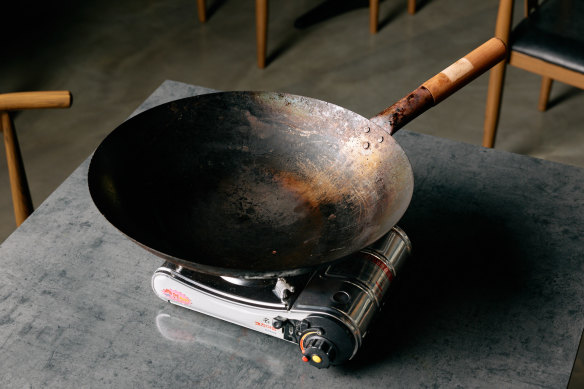[ad_1]
Avoid the expensive brands, she says, while dishing up advice on how to “season” it correctly and the type of burner you should use.

Emily Yeoh wants you to stop buying fancy woks.
“If you want to get good char, don’t invest in a very expensive wok,” Yeoh says. “It’s probably not going to work. My advice is to go to an Asian grocery store, like Yuen’s, and get a small wok. I know it sounds weird, but the cheapest one is the best.”

The former MasterChef contestant, who owns Emily Yeoh Restaurant in Paddington, Brisbane, talks a lot about the char of her wok. She says that’s what will help give your food a touch of wok hei, or “breath of the wok” – the prized smoky taste you’ll find in a well-cooked Malaysian char kway teow, or a Cantonese beef chow fun.
Yeoh’s preferred wok can be nabbed for $15 at Yuen’s Market in Brisbane, but she says she’s seen the same type for as little as $8 at other Asian grocery markets.
“I don’t blame people,” Yeoh says. “There’s a lot of advertising out there telling us to buy the expensive wok. But don’t. Get the cheapest one, because they’re thin, and they’re really good when it comes to charring things.”
So, you’ve sold your fancy wok on Marketplace, you have your cheapy in hand, and you’re ready to cook. Not so fast, Yeoh says – you’re going to need to season it.
First, give your new wok a wash and dry. Then set it on the burner at the highest heat you can manage until it starts to smoke, turning the wok as you go. This will burn off any residual substances from its manufacturing process.

“You want to burn it for a fairly long time, until it’s really smoky and turns black,” Yeoh says. “When you bought it, it was probably a more silver colour. If you don’t want to burn it in the house, maybe do it in the backyard [with a portable burner].
“You’re not burning the wok. You’re burning away all that residue, which becomes carbon. So you’re burning away the carbon, essentially.”

Once you’re finished, give your wok a second wash in hot water (no detergent this time), return it to the heat and get it smoking again, then turn off the gas and apply some cooking oil – enough to simply coat the wok’s surface – wiping out any excess with paper towel. Now, it’s ready to do some actual cooking.
In the kitchen at Emily Yeoh Restaurant, the chefs complete this seasoning process daily with all the woks, because of how often they’re used. At home, simply repeat before each time you use your wok.

Once you have your wok, the next question is, what should you cook with it on? Home gas or electric stoves often aren’t hot enough and, while portable wok burners are good, Yeoh says they can require a lot of maintenance and cleaning to keep the gas flowing correctly.
Instead, she recommends the kind of camping stove you sometimes find on the table at your neighbourhood hotpot – the ones where you slot in a disposable gas canister. They might not match the temperature of the enormous wok burners in Yeoh’s Paddington kitchen, but they’ll give you a solid, even flame in a relatively compact package.
“They’re easy to maintain, and they’re good for either apartments or outside cooking,” she says.
You can get a 15-inch (38cm) iron wok for $15 at Yuen’s Market, but they can be found for less if you shop around.
Restaurant reviews, news and the hottest openings served to your inbox.
From our partners
[ad_2]
Source link


